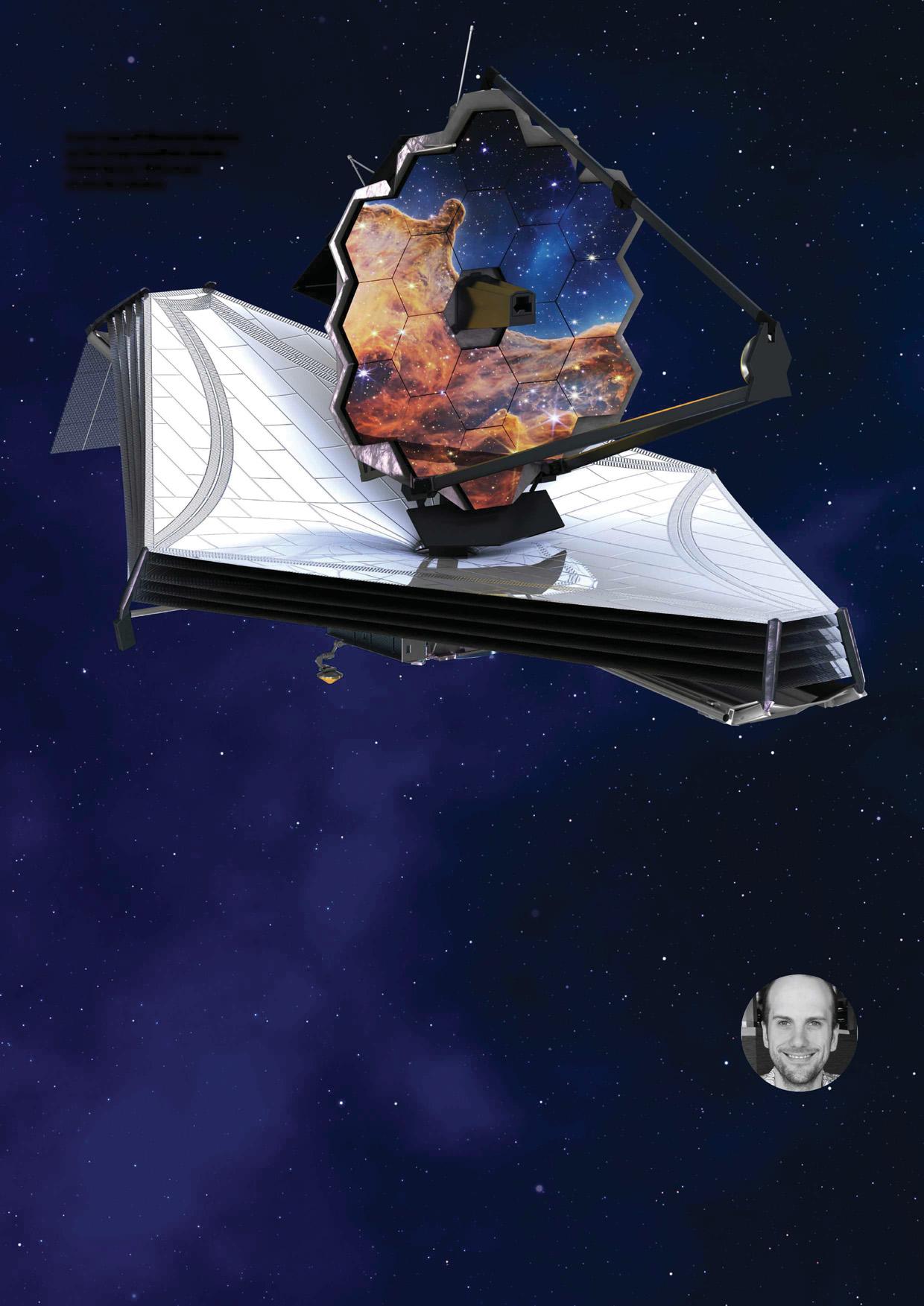
Colin Stuart (@skyponderer) is an astronomy author and speaker. Get a free e-book at colinstuart.net/ ebook
A single galaxy 13.1 billion years old is picked out of a field of hundreds and its light signature recorded by Webb's NIRSpec instrument, a tool so sensitive it can mine information simultaneously from up to 150 individual galaxies that existed in the very early Universe
What do the first stars look like?
JWST will take us back to when the very first galaxies appeared
Astronomers are always looking back into the past. That's because it takes time for light to travel across the Universe. We don't see things as they are when the light arrives here, but as they were when the light first departed. For distant galaxies, the delay is millions and even billions of years.
So very distant galaxies were also some of the first galaxies to form in the Universe. The Hubble Space Telescope revolutionised this area of research, finding thousands of distant galaxies in a patch of sky so tiny that it could be covered by a grain of sand held at arm's length.
The light from the most distant galaxy observed before JWST - HD1 - took a staggering 13.1 billion years to reach Earth. Astronomers are peering back to a time just 700 million years after the Big Bang. Yet they want to look back even further to when the very first stars and galaxies appeared, estimated to be 100-200 million years after the Big Bang. They're hunting the first light that lit up the so-called cosmic dark ages.
Hubble just isn't up to that task - you need an entirely different kind of telescope. Enter JWST, which gathers infrared light instead of the visible light to which our eyes, and Hubble, are sensitive. Infrared light is able to penetrate the dust that can sometimes block our view of distant galaxies.
Diese Geschichte stammt aus der September 2022-Ausgabe von BBC Sky at Night Magazine.
Starten Sie Ihre 7-tägige kostenlose Testversion von Magzter GOLD, um auf Tausende kuratierte Premium-Storys sowie über 8.000 Zeitschriften und Zeitungen zuzugreifen.
Bereits Abonnent ? Anmelden
Diese Geschichte stammt aus der September 2022-Ausgabe von BBC Sky at Night Magazine.
Starten Sie Ihre 7-tägige kostenlose Testversion von Magzter GOLD, um auf Tausende kuratierte Premium-Storys sowie über 8.000 Zeitschriften und Zeitungen zuzugreifen.
Bereits Abonnent? Anmelden

Could We Find Aliens by Looking for Their Solar Panels?- Designed to reflect ultraviolet and infrared, the panels have a unique fingerprint
Researchers searching for life beyond Earth spend a lot of time thinking about what telltale signs might be detectable astronomically. Forms of unambiguous evidence for the presence of life on another world are known as biosignatures. By extension, techno signatures are indicators of activity by intelligent, civilisation-building life.

Antimatter- In our continuing series, Govert Schilling looks at antimatter, the strange counterpart to most of the matter filling our Universe
Particles and corresponding antiparticles are very much alike, except they have opposite electrical charges. For instance, the antiparticle of the electron - known as the positron - has the same tiny mass, but while electrons carry a negative electrical charge, positrons are positively charged.

Where Have All The Milky Way's Early Stars Gone?- Our Galaxy has a curious lack of pristine stars
The Big Bang produced a Universe filled almost exclusively with hydrogen and helium; all other elements - what astronomers call metals - were produced by stars, supernovae and everything that happens later. So if you can pick out a pristine star with no metals polluting it from among the billions in the Milky Way, then you are likely to have a star dating from our Galaxy's earliest days.

Inside The Sky At Night - Two years ago, exoplanet scientist Hannah Wakeford received some of the first data from the JWST
Two years ago, exoplanet scientist Hannah Wakeford received some of the first data from the JWST. In July's Sky at Night, we discovered what she's learned since then.

How to stack DSLR data in Siril
Easily combine multiple frames to boost detailin your astro photos

Lunar occultation of Saturn
You'll need to strike a balance on 21 August to capture the Moon covering the ringed planet

How to plot a variable star light curve
A rewarding project to chart stars that change brightness

Smartphone photography with a telescope
Mary Mcintyre explains how to get impressive night-sky images using your phone

Once-a-century solar storm is overdue
If a Carrington Event struck today it would be catastrophic, says Minna Palmroth

The new era of human spaceflight
There's been a step-change in crewed space missions since the dawn of the 21st century. Ben Evans charts its course and looks ahead to future horizons